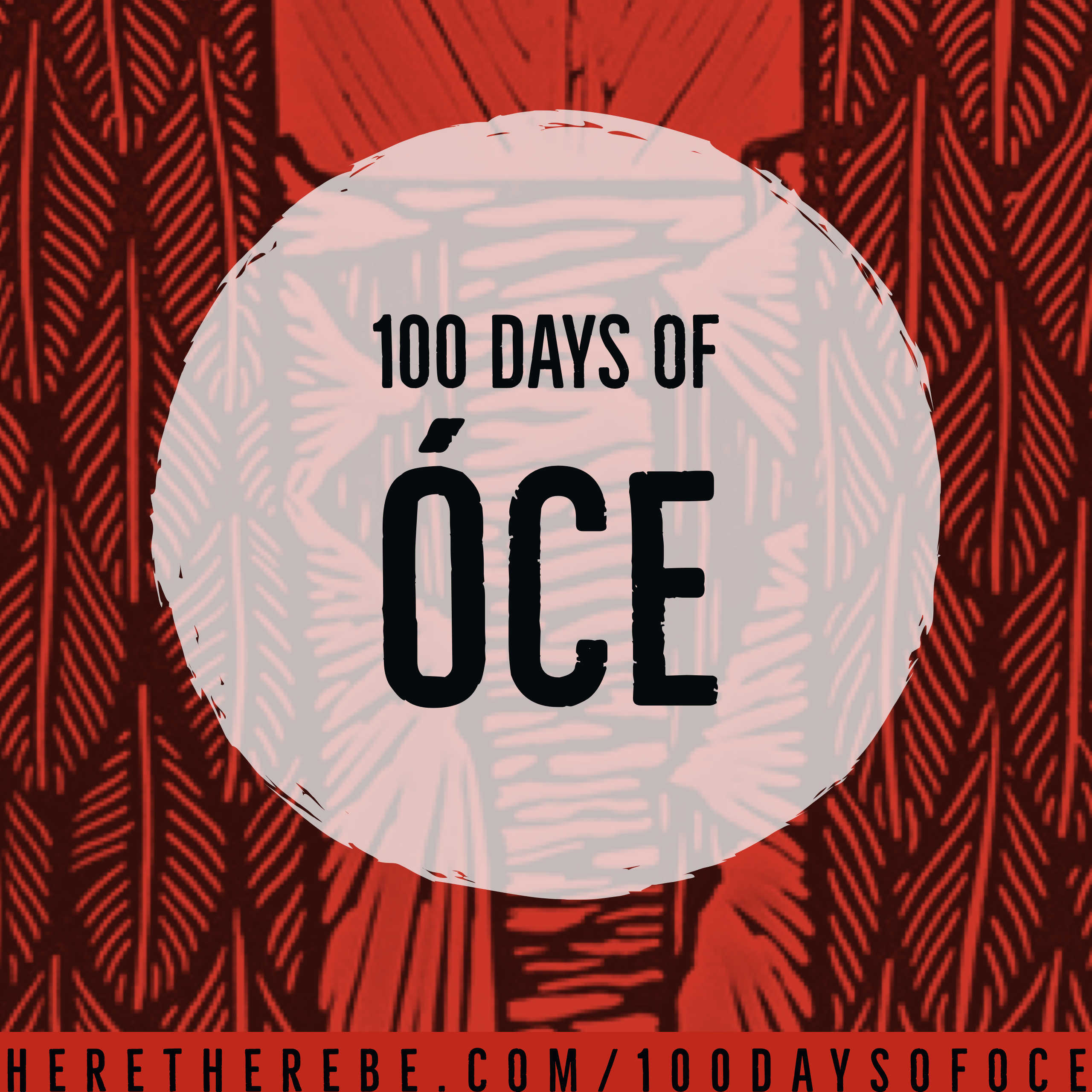Barker Blade
The Forester's Blade of The North
Also known as "The Forester's Blade," the Barker Blade is a popular weapon and everyday tool among Northern Walkingfolk.
Barker Blades allow their wielders to keep opponents at a distance, where any advantages in height, weight, and upper body strength would be lessened. The weight gives power to strikes and cuts, and the positioning of elements and relative balance of the Barker allows it to be used both aggressively and defensively.
The multipurposed blade can be used as a weapon, but has its roots in forestry and woodscare tools.
Significance
Origins of the Barker Blade descend from Forester's Blades, pruning tools used in woodscare that, over time, were modified to act as weapons: against unruly fauna, against threats from other folken, and, it is said, against the forces of the old gods.
It is this final use that ties Barker Blades into common depictions of early Blazes, and due to their dual natures, the tools are inextricably connected to The Process Way both in mythology and mundane. With their usage spread through the connective economic nature of The Process Way, the Barker Blade operates as perhaps the most unified symbol of the Northern Walkingfolk.
Popularity outside of the North
Due partially to its versatility, and equally due to the immigration of Northern Walkingfolk into the Greater Inbound Lands after the Northern Treaties, the Barker Blade's popularity has spread out of the North. The size, physical characteristics, and stature of most Walkingfolken have them at a physical disadvantage compared to the reach or force of other folk races; the length and use of the Barker Blade help even the odds against most opponents or against fauna. As a result, it remains especially popular among Northern Walkingfolken Hetchling, and it is even viewed as a useful variation of the spear among Birdfolk. Birdfolk who spend much time in the North, such as those among the Rangers, tend to adopt at least a lay knowledge of the weapon practice. It is much less common among non-hetchling Southern Walkingfolk, who culturally favor the traditional net and trident for distance combat. Exceptions are those who serve in Ranger capacities who become stationed in the North, where training with the Forester's Blade is considered standard military practice, even if it is not the individual's first choice in arms.Elements of the Barker Blade
Metal Elements and Blades
Though some variations on the blade itself exist, most Barker Blades follow the traditional shape and style:Primary blade
The primary blade is long. Two main variations exist:- A Pare Blade, which has a double-edged strong hook (Claw) or J- or C- curve (Crescent), often with the inside curve sawtoothed for a grab and cut combination. Pare Blades are usually between seven to nine inches long. Other variations include the addition of a Needle, or stabbing spike typically pointed up and out towards the opponent, added at the base of the back curve, which allowed for stabbing motions into vital organs or, when paired with longer shafts, as use as a short pike against rushing opponents. Pare Blades are favored among some for their ability to be used as a seige blade, penetrating into the gaps of protective walls before being withdrawn to pull out material.
- A Bill Blade, which has a relatively straight shaft with a curved tip, with the cutting edge along the outside curve. Bill Blades typically range between one foot to eighteen inches in length. Bill Blades were used more primarily as stabbing and cutting weapons, or with the pommel as a battering weapon; while the inner curve and force of the Bill can be used to manipulate the limbs of an opponent, practice involves relying on the secondary hook for grabbing. Bill Blades generally do not include a Needle.
Secondary Hook
Barker Blades are known for their blunter secondary hook, a smaller curve reaching down towards the shaft and located lower along the brace. This hook extends up and out - designed to act as a blocking defense (from either sword or treelimb) - before before hooking down as a grappling implement. Variations on the Hook include either the addition of (or replacement by) the Pin, a straight spike with a slightly hooked tip, perpendicular to the shaft, used for stabbing and blocking. The hook of the tip was designed to serve as a hook for woodscare, but also works to rip wounds when removed, preventing the puncture from sealing. On sawtoothed Pare Blades, the Hook is often at the base of the inside curve of clawed shapes; this helps roll cut tree limbs away from the forester. On Bill Blades and on crescent-shaped Pare, the hook is often along the base of the outside curve, helping the wielder grab the opponent after manipulating or cutting limbs.Brace
Barker Blades use metal or wrapped bracing to hold blades in place along the top area of the shaft. Wrapped bracing is preferred among townsfolk, who often switch working blades with Prakis Blades; metal bracing is preferred for those who carry the Barker as a weapon primarily, and tool as necessity.Pommel
Barker Blades traditionally have a hard rounded metal or stone pommel at the end of the shaft. This protects the shaft during routine use as walking stick or tool, as well as provides balance and tertiary offense as a battering melee weapon when spun. In cases where the Barker is used as a pike against rushing opponents, the pommel provides a firm base for planting the weapon.Wood Elements
Sheath
When not in use, some wielders of Barker Blades prefer to cover their blades in a wooden sheath. When more complex Blade arrangements are used (such with Pare), this is usually a flat, circular, disc-shaped sheath, often with decorative inlay or designs signifying important sigils or symbols of the wielder. When simpler Blade arrangements are used (such with Bill), the sheath is generally flat and rectangular, as a paddle-shaped sheath. Similar decorative tendencies can be seen. Both allow the wielder to use the sheath in similar manner to the original blade, for nonlethal smacking, tripping, manipulating, or prodding.Shaft
Barker Blades have a wooden shaft, usually made from redohk, banbu, robinia, tamarack, and eshtree in the North, though cheaper versions are sometimes made from sykamur, whitohk, or waxwood. Due to Birdfolk imports, Barker shafts of exceptional quality may be made from Kebracho, Janka, Macacauba, and Amaranth. The shaft allows the wielder to use the Barker at a distance, as well as functions similarly to staff weapons in blocking blows, tripping opponents, or cross-checking. The shaft is generally no shorter than 40 inches in length, or may be up to 97 inches, depending on the size and preference of the wielder. Pare Blades are usually attached to shorter length shafts, while wielders of Bill Blades prefer longer sizes. The thickness of the shaft varies slightly based on the wood used and the preferences of the wielder, but is usually around 1 inch in thickness. Barker Blades often double as walking sticks either with blade or when blade detached, so many augment a standardmade Barker shaft with wrapped grips in order to fit their particular grip size.Prakis Blades
Prakis Blades are spear-like variations used in practice with the Barker Blade as a whole. The change allows the practitioner to work with the length of the weapon, without risk of serious injury. As they are easily broken or damaged during practice and sparring, these replaceable practice blades are often made from banbu, which tends to split rather than break. As the wielder grows more proficient, blunted wood Prakis may be switched. When coupled with wrapped bracing, the modified practice blade can be easily removed and replaced. Among townsfolk, most carriers of wrapped Barker Blades tend to carry a few spare Prakis blades in addition to their primary blade. Among Birdfolk Rangers, the Forester's practice weapons- shaft and blade - tend to be carved from a single piece of wood, often with modified metal bracing, designed to train the weight and movements of the actual weapon as much as possible. Though blunted, the additional risk of general injury, coupled with the tendency of ohkenwoods to shatter into spear-like pieces, makes such practice weapons controversial."A solid practice weapon? That breaks into spears with the firm strike and use? Unnecessarily dangerous. We're trying to teach them, not hurt them before they even get on the field." - Trevan, Walkingfolken, Instructor of the Third House "It is poor practice if there is no real risk of being hurt. Why would we not teach them the lessons that war does not overlook?" - Braxis, Birdfolk, Ranger Instructor
Item type
Weapon, Melee
Related ethnicities
Weight
Though sometimes seen as a disadvantage, the weight of the Barker gives power to strikes and cuts.
Dimensions
Barker Blades range roughly between 4 feet in length to 6 feet in length, varying on the size and preferences of the wielder.





Comments